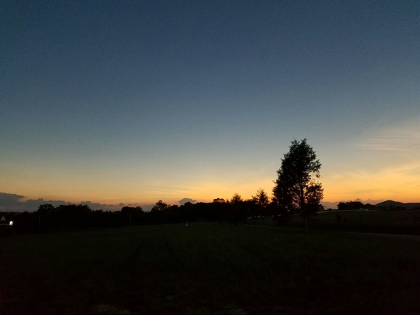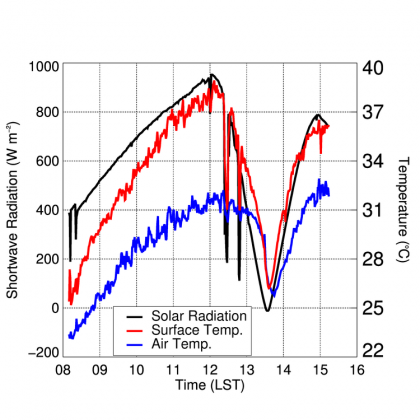ARL Weekly News – August 17, 2018
HQ
Dr. Hyun Cheol Kim is traveling to South Korea August 21-31 for kick-off meetings related to three projects: “Development of top-down emission estimation framework based on artificial intelligence techniques,” “Source Apportionment of PM2.5 using Three-Dimensional Photochemical Models: Top-down adjustment of NOx and SO2 emissions,” and “Development of the Korea-Monitoring Emission Modeling System (K-MEMs).” The three projects resulted from a Memorandum of Understanding between ARL and the National Institute of Environmental Research (NIER). Dr. Kim will engage with colleagues from Ajou University, the Ministry of Science and Technology (MSIP), and NIER during his trip, and will visit the Gwangju Institute of Science and Technology (GIST) for an invited talk.
FRD
New publication: Clawson, K.L., J.D. Rich, R.M. Eckman, N.F. Hukari, D. Finn, B. Reese, 2018: Climatography of the Idaho National Laboratory 4th Edition,NOAA Technical Memorandum OAR ARL- 278 , Air Resources Laboratory, Idaho Falls, Idaho. 214 pp. doi.org/10.25923/ze6p-4e52.
ATDD
U.S. Climate Reference Network (USCRN) Installation in Alaska in 2018: The USCRN Program at ATDD has now installed (as of August 16th) a new station in the Yukon Delta National Wildlife Refuge near Bethel, Alaska. This location is in the southwestern portion of the state as we now begin to expand into more remote sites in the western part of the state. This brings the the number of operational USCRN stations in Alaska up to 22 which gets us to 76% of the eventual total of 29 stations planned in Alaska by the end of FY 2022; data from the station can be viewed on the USCRN web site (http://www.ncdc.noaa.gov/crn) at https://www.ncdc.noaa.gov/crn/current-observations. For more information, please contact Howard Diamond at 301-427-2475.
The article “Great American Eclipse Data May Fine-Tune Weather Forecasts” by Temple Lee, Michael Buban, Michael Palecki, Ronald Leeper, Howard Diamond, Edward Dumas, Tilden Meyers, and Bruce Baker was published online on 16 August in Eos at https://eos.org/project-updates/great-american-eclipse-data-may-fine-tune-weather-forecasts. In the article, we describe the rapid near-surface meteorological changes that accompanied the total solar eclipse on 21 August 2017. To characterize these changes, we used 5-min data from the US Climate Reference Network (USCRN) and flux observations from a site along the path of totality near Ten Mile, Tennessee, located approximately 75 km southwest of Knoxville. Depending on the proximity of the USCRN station to the path of eclipse totality, temperature decreases ranging from 2-5*C were observed, as were increases in moisture. These findings indicate the sensitivity of the lower atmosphere to a loss of solar energy and highlight the necessity of high temporal resolution, quality-controlled climate observation datasets at the continental scale.



